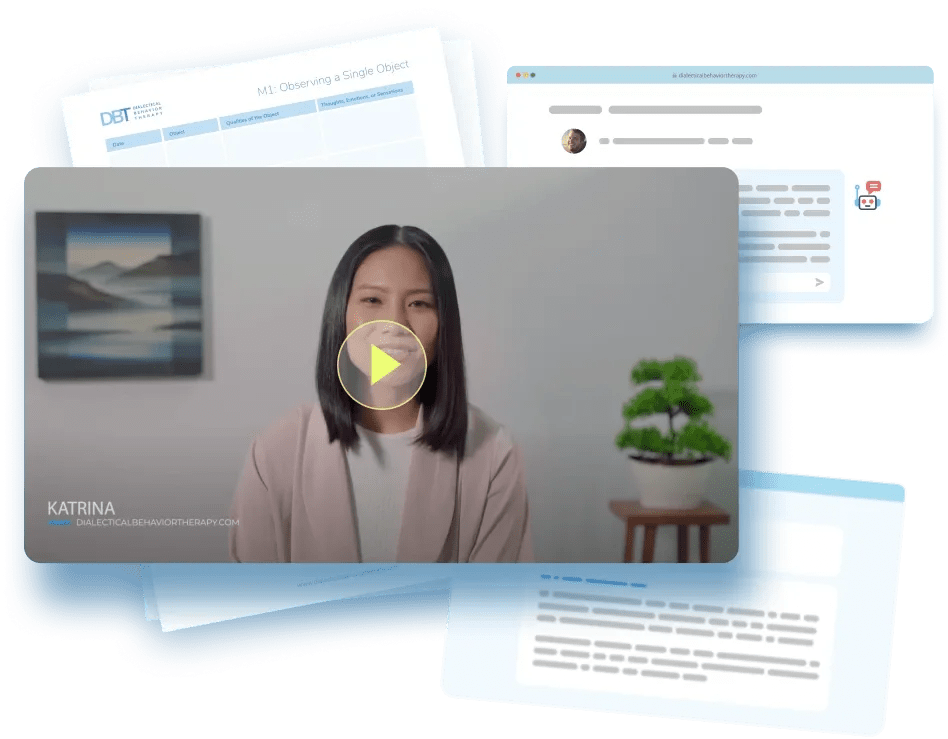PR7: Relapse-Prevention Plan
Virtual Coach
Work step-by-step through the Problem-Solving, Coping & Relapse-Prevention exercise with the virtual coach.
Introduction
Some problems blindside you, but others follow a script. The thought loop that spirals at 2 a.m., the habit you return to when stress creeps in, the tension that never fully leaves your shoulders. Tools like the Five-Step Problem Solver, STOPP Card, and Stress Inoculation Imagery are meant to interrupt those patterns. But when disruptions hit harder or stick around longer, it helps to have something more durable. That’s where a relapse-prevention plan can keep those early signs from turning into a full spiral.
CBT results last longest when you can catch the slip: a dip in mood, surge of worry, or old avoidance habit, before it snowballs. A written Relapse-Prevention Plan (RPP) maps (1) your personal red-flag signals, (2) the skills that reset you fastest, and (3) the people and places that keep you accountable. Randomized trials show that clients who complete an RPP at discharge cut symptom relapse by 35–50 % over the next year compared with those who leave treatment without one.
Instructions
Goal: Draft one RPP today, review it monthly (or after any 2-week mood dip) for the next 12 months.
Step 1: List Top Triggers
Identify both external (e.g., holidays, deadlines) and internal (e.g., poor sleep, illness) triggers.
Example: “End-of-quarter crunch; three nights < 6 h sleep.”
Pro-tip: Use your SM2 & BA3 logs to uncover recurring patterns.
Step 2: Spot Early-Warning Signs
Write 3–5 signs that indicate you're moving into the “amber-light” zone, behavioral, physical, or cognitive cues.
Example: Skipping workouts; scrolling at 1 a.m.; jaw tight.
Pro-tip: Keep the list short. Memorable beats exhaustive.
Step 3: Choose First-Line Skills
Pick 3 go-to skills that consistently cut distress in 10 minutes or less.
Example: STOPP Card (PR2); 5-Minute Starter (BA2); Breath 4-7-8 (PR3).
Pro-tip: Only include tools you’ve personally tested and trust.
Step 4: Pick Strategy Escalation
Decide what you’ll do if distress remains ≥ 7/10 after trying first-line skills.
Example: Call friend; run full PMR (PR4); schedule therapy booster.
Pro-tip: Having a threshold protects against “white-knuckling.”
Step 5: List Support Contacts
Write down 3 trusted people and relevant professional resources.
Example: Text Sam (555-1234); email therapist; 24/7 crisis line.
Pro-tip: Reconfirm contact info every quarter.
Step 6: Environmental Tweaks
Make your surroundings recovery-friendly.
Example: Keep elastic band + worksheet in your bag; block doom-scroll apps 10 p.m.–7 a.m.
Pro-tip: Subtle prevention often outperforms intense reaction.
Step 7: Plan Review Dates
Schedule a 30-minute self-check each month; consider sharing it with a friend or therapist.
Example: First Sunday monthly, 7 p.m.
Pro-tip: Set calendar + phone reminders to build the habit.
FAQs
How detailed should my triggers be?
List the handful that historically cause ≥ 2-week dips. Too many items = noise.
What if a warning sign appears but my mood feels okay?
Act anyway. Early action is the easiest action. Run one quick skill and log the event.
When do I call my therapist back?
Write a clear threshold (e.g., PHQ-9 ≥ 10, panic ≥ 2/week, or skills fail twice).
Can the plan change?
Absolutely. Update after life events, medication changes, or new skills learned.
Disclaimer
If you have any behavioral health questions or concerns, please talk to your healthcare or mental health care provider. This article is supported by peer-reviewed research and information drawn from behavioral health societies and governmental agencies. However, it is not a substitute for professional behavioral health advice, diagnosis, or treatment.

